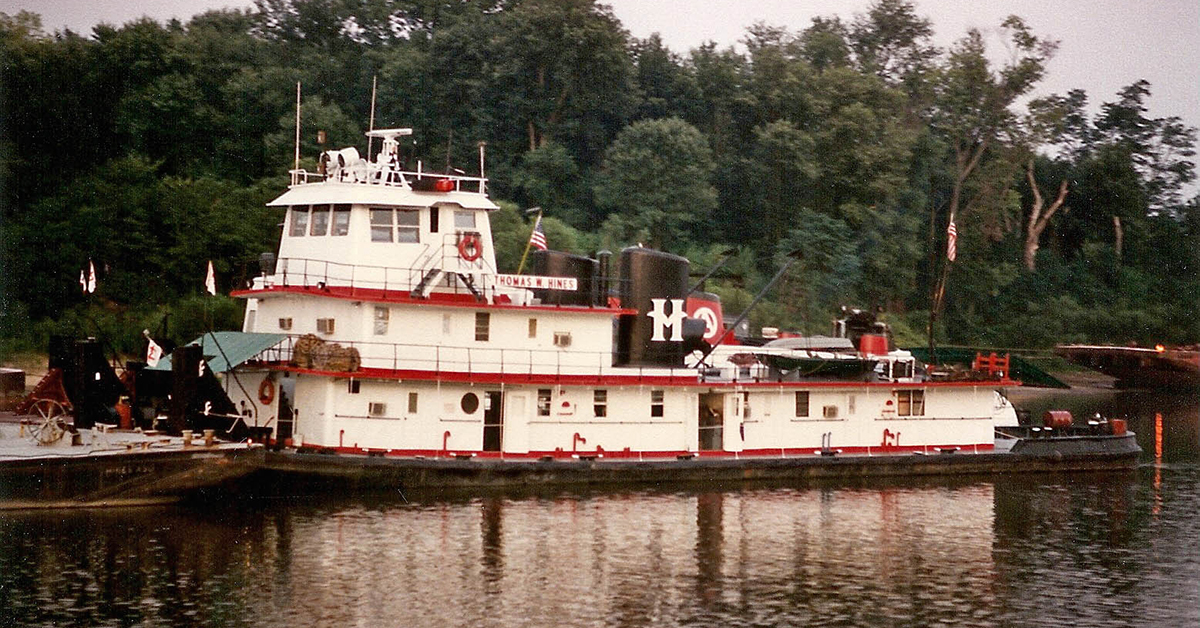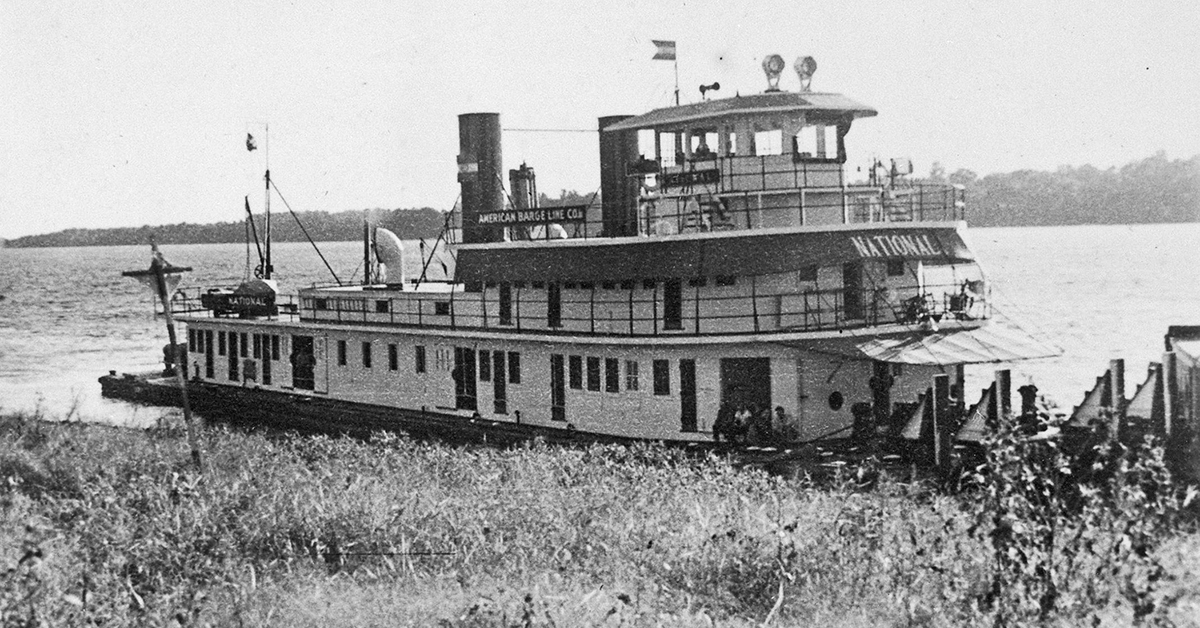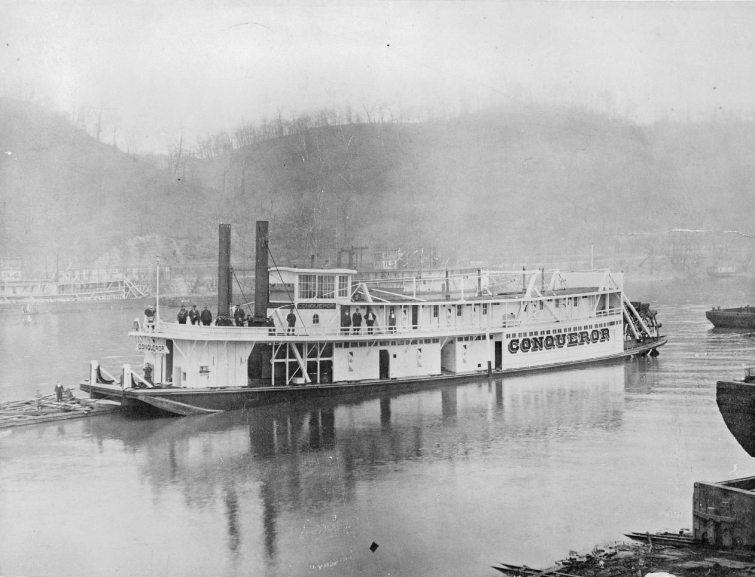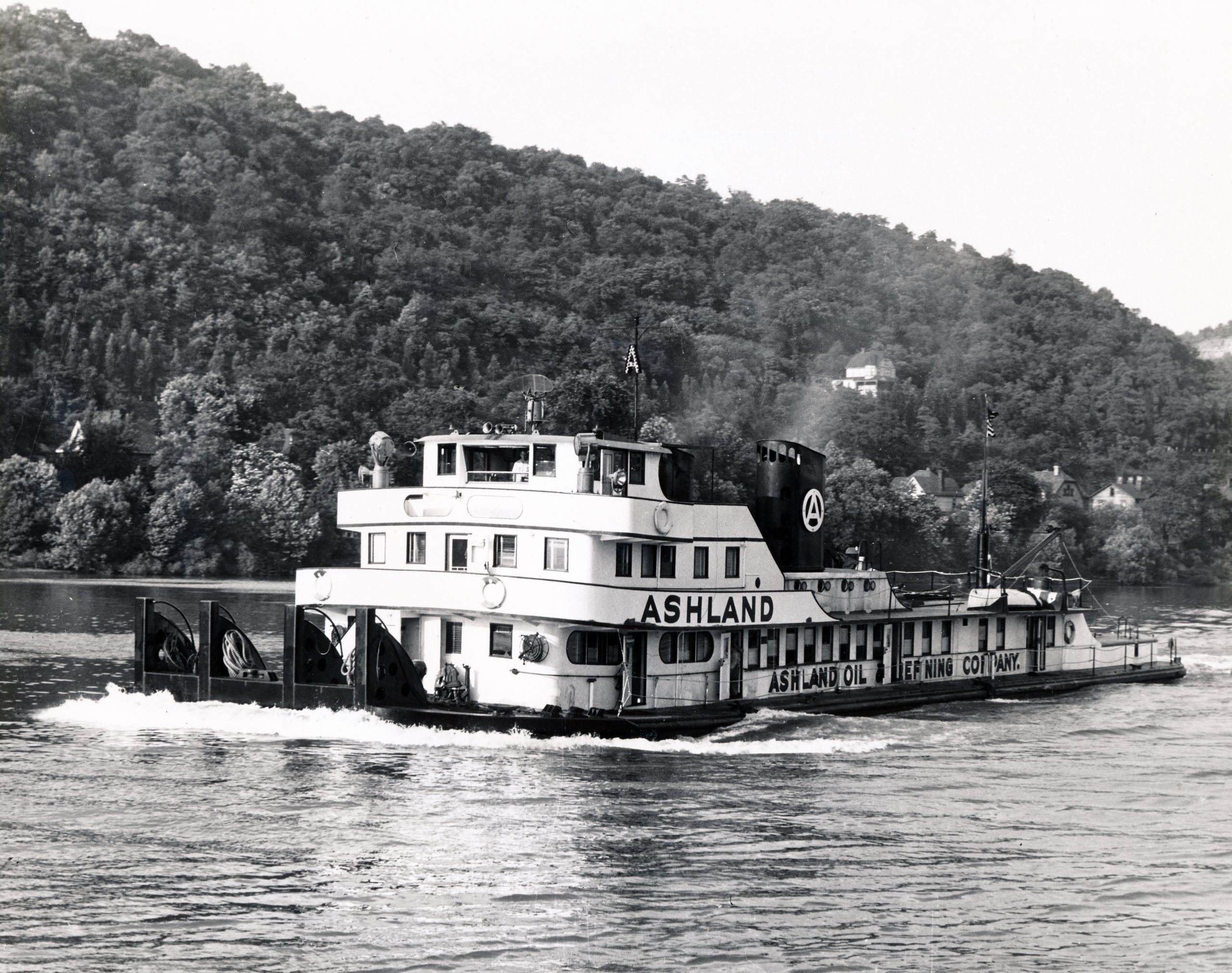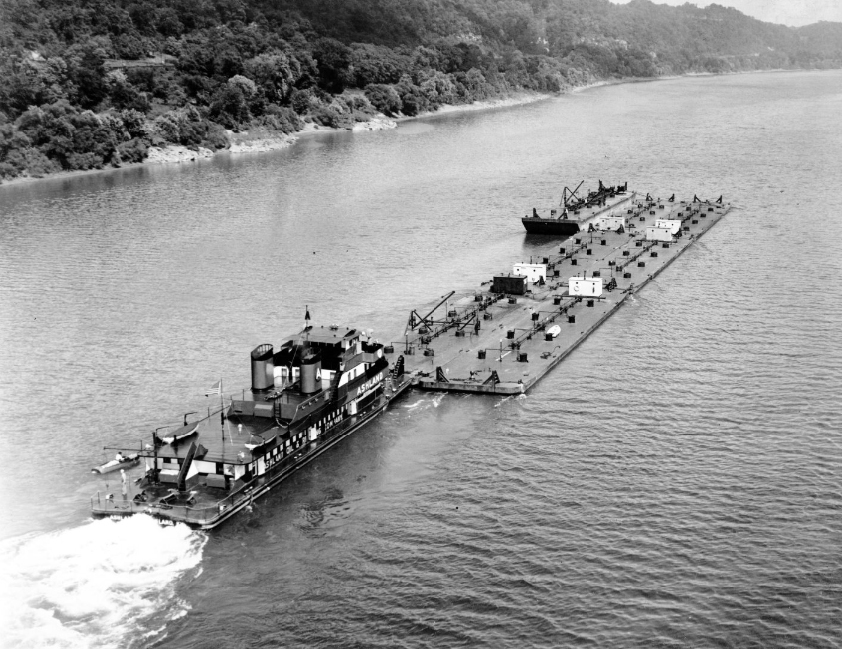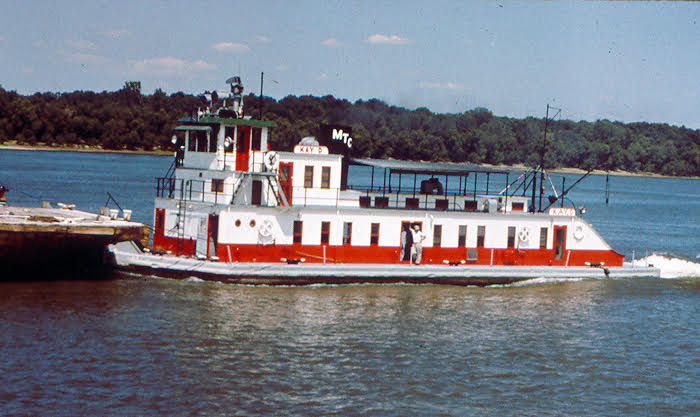A photo was taken recently of two boats beached out on the bank at Ledbetter, Ky., near Paducah. They were apparently placed there for dismantling and scrapping. Both of these… Read More
Old Boat Column
A look back into the rich history of the inland waterways transportation industry. From the earliest steam paddlewheelers to the grand sternwheel and sidewheel packets, and the eventual transition from steam to diesel, you’ll find fascinating stories and photos of a different steamboat every week.
This column has previously detailed two towboats built by the fledgling Jeffersonville Boat & Machine Company that eventually morphed what’s now commonly known as “Jeffboat.” Those boats were the Progress… Read More
The last column looked at the Harper C. Patton that was built by Hines in 1954. A recent event involving a bell has prompted this look back at another boat… Read More
Having “grown up” around towboats and rivermen, then working actively on the river for more than 50 years, this writer has heard of many superstitions and omens of “bad luck”… Read More
The last three columns recounted a letter written by noted historian and author Capt. Frederick Way Jr. to the marine superintendent of Ashland Oil & Refining Company AO&R) in January… Read More
The previous two columns have been about the original Ashland Oil & Refining Company (AO&R) towboat named Ashland going missing during a flood in December 1942 and January 1943. The… Read More
In the last column, we began looking at a letter written by noted historian and author Capt. Frederick Way Jr. to M.C. Dupree, marine superintendent of Ashland Oil & Refining… Read More
It is hard to imagine today, given the plethora of communications technology available to towboats and company office personnel, but there once was a time none of that existed. Towboats… Read More
In the last column, we looked at the first of three towboats named Kay D. St. Louis Ship built the first in 1940 for the Marine Transportation Company (MTC) of… Read More
A question posed to me on a social media post recently has prompted this column. Multiple boats with the same name can cause confusion, particularly when the boats in question… Read More


